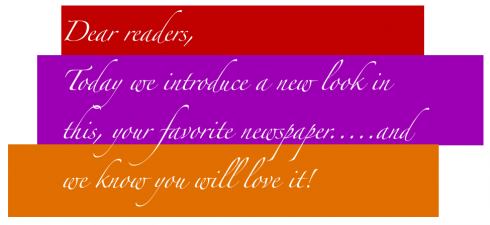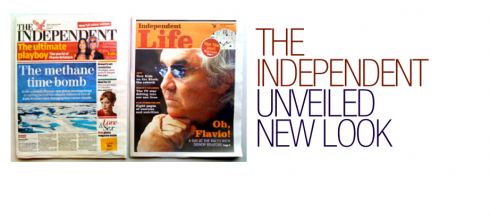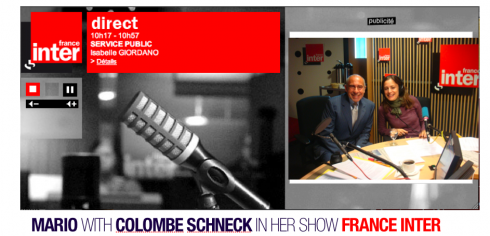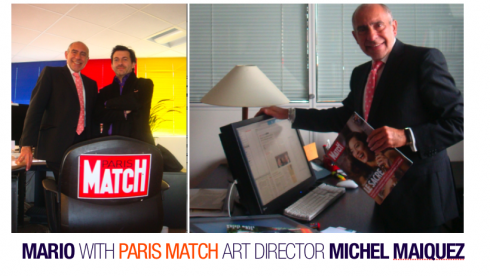
It is an exciting October for us at Garcia Media, as we prepare to launch four different and very distinctive products: The Oklahoman (Oklahoma City, USA), Paris Match the French magazine, published in Paris, Salzburger Nachrichten, Austria, and La Tribune, the French financial daily, also published in Paris.
With all the details worked out (we hope!), the templates finished (we are sure of that), the style guides prepared and studied, then comes the usual question from the editor: how do we tell the readers about the project?
Attention shoppers: brand new look on Aisle 5
Well, not precisely, but one does need to inform readers about the changes they are about to see in their newspaper/magazine or online edition.
Not to do so is to underestimate readers, which I learned long ago, NEVER to do. In fact, readers are sometimes smarter and more savvy than the editor, and they usually know who Beyonce and Amy Winehouse are, by the way.
So, what do you tell readers about the project?
I have spent part of my day dealing with this topic today at Paris Match, which premieres October 2, with its first change of “maquette” since that icon of design, Milton Glazer, designed it.
1. Benefits—What’s in it for the reader? The reader is not interested in how long your team spent working on this project, or how much it cost, or where the consultant was flown in from. The reader is asking the question: what is in it for me? How do I benefit from this change in my publiation? So deal with specifics—-bigger type, more color, better navigation, for example.
2. Show me, show me: Use a “guide to your new newspaper/magazine” with possible use of info graphics that detail where certain items are found on a page. IF you have deviced a new set of story structures with headlines, summaries and other secondary readings, please explain what the purpose of those will be, so that readers will understand it.
3. Where is Garfield the Cat? : By all means, specify location of such routine items as advice columns, horoscopes, classified pages, etc. If you moved them, you have to tell readers AHEAD of time where those items will be found in the new packaging of your publication. And, whatever you do, if the comic strips are moved, or changed, I recommend PRIOR information about this, and I wish you luck. I will never forget when we moved Garfield the Cat from the Kleine Zeitung’s page in Graz, Austria, and even had a letter from the Bishop, who missed his favorite feline.
4. Behind the scenes: and, yes, there is nothing wrong with telling readers interesting aspects of the project: how you tested with focus groups, or how you went back to the old logo when the new one did not test well with habitual readers. Just like we are fascinated by behind the scene information about our favorite TV sitcoms or Broadway musicals, readers like to know how a newspaper or magazine operates internally. Just be careful how much you reveal, since most readers still think their newsrooms are populated by reasonably normal individuals.
![]()

Here is a related blog concerning how editors announce redesigns of their publications. It deals specifically with the Monday, Sept. 22 unveiling of London’s The Independent’s new look:
http://www.markporter.com/notebook/?p=147


Mario this morning on radio show France Inter with Colombe Schneck
Early start to make my way to the radio studio for an appearance in the popular France Inter show, hosted by media commentator Colombe Schneck; today an interview with me about the Oct. 2 launch of Paris Match, and discussion of redesigning a financial daily, La Tribune, which premieres here Oct. 20. Those interested in listening to the interview can go online:
http://www.radiofrance.fr/franceinter/em/jaimessources/
![]()

Continue in Paris, braving a subway (METRO) system that is not running as timely and uneventfully as usual: I arrived here Monday in the midst of a strike that paralyzed some of the routes (including the number 3, which I take to Paris Match daily). Yesterday, the usual 15-minute ride took 45, as we stopped for long periods in the intestines of this glorious city, and I somehow fantasized that the Phantom of the Opera would make an appearance. Between Opera, where I got on, and Pereire, a subway musician got on and proceeded to do his rendition of Mr. Bojangles, but was not prepared for the long delay, so he ran out of music to play and after a rather melodic rendition of Autumn Leaves in French, he started doing Bojangles again. By then, we were ready for the car to move, which it did.
Subways are the same everywhere: here, at 8:45 many hung their heads and went to sleep, others browsed the free newspapers of Paris with highly any interest (could the content be that bad, or is it the design?)….but this is Paris, the city of love, so a couple across the way kissed passionately and nonstop. Obviously, their love repertoire was more extensive than the musician’s. I saw Mr. Bojangles as he jumped out of the car and eyed the train across the tracks, ready to perform his favorite song again, for a different crowd.
Soon I was up in the street, and on the elevator to the Paris Match newsroom, to meet with Art Director Michel Maiquez and start working on the next set of pages.
TheMarioBlog posting #101